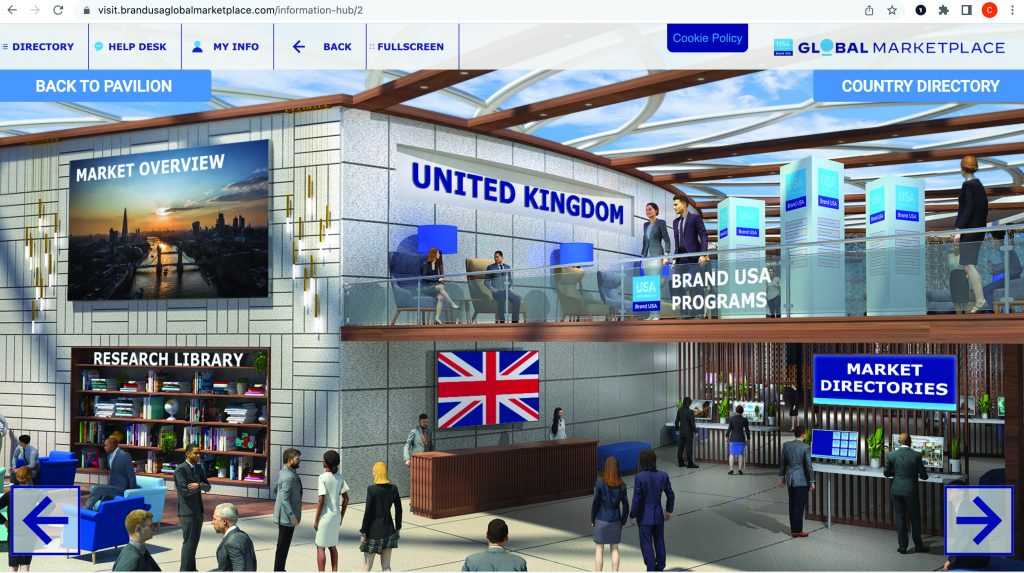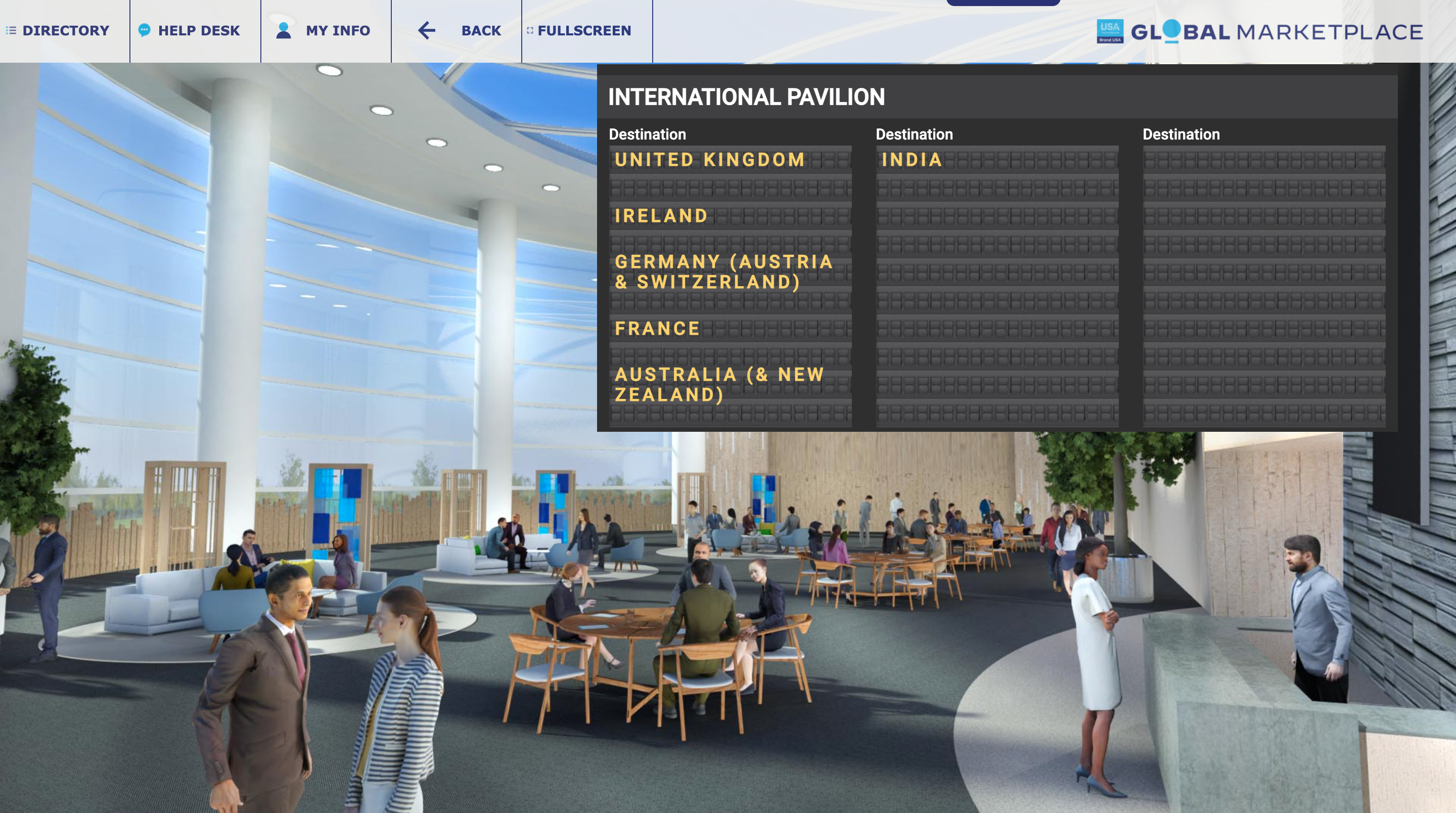How Brand USA is restoring America’s international inbound travel business
Faced with a near impossible task of keeping interest alive in the U.S. when borders shuttered, Chris Thompson and the Brand USA team put together a strategic framework to navigate through and help the travel industry emerge from the pandemic. The team’s aim was to prove the U.S. was ready for international visitors and put mechanisms in place to entice travelers once again.
“It’s one thing to say you’re ready, but you’ve really got to prove it, and it’s got to be seen and believed by consumers around the world so that they are inspired to come back when the time was right,” said Thompson. “We had a very prescriptive way we were going to do that.”
Thompson’s team recognized the critical importance of keeping connections in an industry that had experienced a substantial amount of turnover. In the summer of 2020, realizing that no one was in a position to host live events anytime soon, the organization built the online Brand USA Global Marketplace that launched in October of that same year. Created as a tool for the industry to maintain connections with top international source markets, the platform has facilitated virtual travel events and thousands of one-on-one meetings between buyers and suppliers that would normally take place face-to-face.
“Knowing that turnover was off the charts, we felt it was critically important for us to keep our buyers and suppliers connected,” states Thompson. And even though the platform was created at breakneck speed, it’s received high remarks from the industry. “Our virtual version of that platform was as good as anybody had seen,” said Thompson. The tool has been used by industry veterans and newcomers alike to build and maintain relationships.
The recent addition of the International Pavilion serves as a one-stop resource for research analytics, content and market-tailored data for top-source markets. Thompson points out that information gathered here (insights, contacts and resource materials) would typically be the type of things that suppliers would have to hire out for. This is critically important at a time when the industry is working with very limited resources.
Building Back Demand
Brand USA had the arduous task of maintaining demand for travel to the U.S. during a pandemic. After a respectful pause, the team jumped back into content production and has continued to produce, curate and license content through its United Stories platform with seven recently released stories about different experiences around the country. Coupled with partner content and the GO USA TV channel that reaches into 220 countries across multiple languages, Brand USA is showcasing some of the best scenery and activities across the country.

“We wanted to keep our fingers on the pulse of what our consumers around the world we’re thinking,” said Thompson. “What we found is that with the exception of a few blips here and there, people’s intent to travel to the United States really didn’t wane.”
Keeping up the momentum, Brand USA turned to social media influencers. “In this age of social media and digital messaging platforms, we realized that there’s lots of folks out there that have very loyal followings. We reached out to influencers in our primary markets and starting last fall, we invited them to come to the United States and experience the trip of a lifetime,” said Thompson.
Built around the pre-established United Stories framework, Brand USA partnered with content creators to articulate the story of the United States. As influencers traveled the country, they shared their experiences with followers in their home countries. And thanks to a robust domestic leisure travel market, their followers witnessed a travel industry on the road to recovery and eager to welcome tourists.
Creating a War Chest
Brand USA’s primary source of funding is through a portion of ESTA fees from foreign travelers entering the U.S. Visitors pay a $14 entry fee, of which $4 goes to Brand USA.
What’s unique about this funding model is that under its charter, Brand USA must secure matching dollar-for-dollar funds from private sector contributions to fulfill its mission. “There’s no better example of skin in the game than having to bring a dollar to get a dollar,” expressed Thompson.
But when travelers stopped coming, so did Brand USA’s source of funding. Faced with an unprecedented challenge, the organization reached out to media and industry partners to develop a plan for recovery, including what that would cost. The resulting whitepaper outlined a plan to fund Brand USA in the amount of $250 million to execute this recovery. It was waiting on the desk of U.S. Commerce Secretary Gina Raimondo on her first day in office, and within weeks it became part of her platform.
Thompson points out that while the bill was historic, it would have not been possible if Brand USA hadn’t had a successful 12-year track record of public-private partnerships. “This was an extraordinary ask under extraordinary circumstances, but if we hadn’t done what we were originally created to do, we would never even get a consideration for an amount of money like that,” said Thompson. “One thing that we demonstrated through two reauthorizations is that we have bipartisan support at the highest level of leadership.”
The additional resources will be spread over three fiscal years and come on top of ESTA fees, so expect to see even more active Brand USA inspired promotional efforts through 2024. Part of the new funds require a private sector match in what Thompson deems as “sticking to our structured and disciplined approach to contributions.”
Hurdles Remain on the Road to Recovery
While open borders and a pandemic that’s becoming an endemic help the case for foreign travelers returning to the U.S., Thompson is still concerned about testing requirements. “I’ve been saying all along that pre-departure testing is enough to cause people to pause until that’s gone away. COVID pre-tests add a level of uncertainty that until it’s relinquished, will not enable us to be able to get back to some semblance of whatever the next normal looks like.”
As for that next normal, Thompson is bullish on a full and complete international inbound travel recovery. “Once we get that pre-departure test gone it’ll come back stronger, quicker and more powerful than the forecasters are saying. Roger Dow [president of the U.S. Travel Association] calls it a coiled spring.”
And while Thompson leads the charge at Brand USA, he doesn’t feel the need to preach from the pulpit about the importance of international inbound travel. “I don’t think it’s that I need to be an evangelist and get all the followers back. I think that people’s priorities have been on the domestic market because that was the quickest way for them to get back revenues. And I think now we’re in better shape because of that, to be able to welcome international visitors back.”
There’s going to be some bumpy roads associated with getting back to pre-pandemic levels and delivering the experiences guests expect, but Thompson feels that we’re farther along down the road because the industry is united.
“We were saying all through COVID, ‘when the time is right.’ Well, the time is now for us to gear up and get back to promoting the U.S. and helping to fuel the recovery.”
The return of international visitation and spending couldn’t be better timed.

